Sustainable Cooling for All is Easy
Sustainable cooling is not just about reducing emissions, it is also about being more efficient which provides long-term cost savings and improves quality of life. Solutions are often smart and innovative, bringing surprising, secondary benefits.
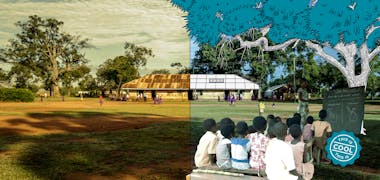
1 in 7 people globally at high risk due to lack of access to cooling
Sustainable Energy for All’s new report Chilling Prospects reveals the escalating threat from lack of access to cooling on people’s ability to survive extreme heat, and warns that this is the decisive decade to deliver fast and sustainable cooling solutions.
- Urgent action and investment needed to protect the 1.2 billion people most at risk from extreme heat and a lack of access to cold chains.
- Access to cooling is the linchpin to enable global food security and storage of medical supplies, protect livelihoods, and reduce heat-related deaths.
- Achieving SDG 7.1.1 (electrification) and SDG 1.1 (extreme poverty eradication) alone enables solutions that would spare nearly a half billion people from high risk of extreme heat by 2030—reducing the overall number of those at high risk by 36 percent.
- How cooling needs are met this decade—how fast and with which solutions—will be decisive for delivering just, inclusive clean energy transitions, adapting to a warming climate, and keeping the UN Sustainable Development Goals (SDGs) within reach.
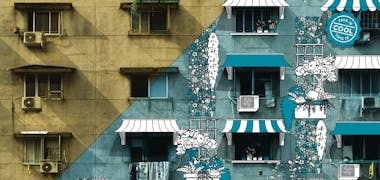
Fair Cooling Fund
Ashden's Fair Cooling Fund, made possible by the Clean Cooling Collaborative, has shown how targeted grant funding can drive holistic support for sustainable cooling innovators. In particular, grants can be designed to encourage organizations to reach new communities and end users, laying the foundations for wider cooling access.
Through the fund, Ashden has injected a total of USD 600,000 into seven frontline cooling organizations around the world. Three of these innovators offer access to sustainable cold chain, and four support cooler homes and streets. In 2019, Ashden worked with these partners to co-create sustainable, affordable solutions targeting people in greatest danger from rising temperatures. These initiatives were launched in 2020.
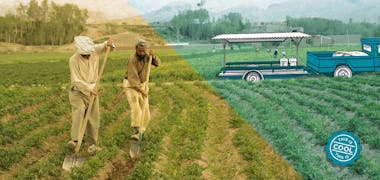
Using data science and innovative business models to strengthen agricultural cold chains
With a warming planet, growing population and developing economies, the global demand for cooling is set to triple by 2050. To address the rising demand for energy and curb the release of toxic gases into the atmosphere, in 2018 the Basel Agency for Sustainable Energy (BASE) launched the Cooling as a Service (CaaS) initiative, which significantly accelerated the uptake of clean, energy-efficient cooling technologies around the world in a way that targets sustainable business growth and mitigates the impact of cooling on the climate.
The initiative established an alliance, which today has more than 70 companies on board, and its business model has been implemented in a variety of sectors and buildings, spanning education to healthcare, industry to commerce. By removing the hurdles of high upfront investment and operation and by aligning incentives towards efficiency, the model powerfully tackles the need for cooling and addresses its impact on climate change.

CoolAnt Beehive – Passive cooling innovation from India
The Delhi-based "Ant Studio" has designed a unique air-cooling solution that uses traditional methods coupled with modern technology to combat climate change while increasing human thermal comfort.
Inspired by its geometry, the Ant Studio team design the 'Beehive' installation as a natural, artistic air cooling and purifying solution that does not warm the planet. The solutions designed by the team are unique and directly engage the local community.
The Beehive is a cooling solution that does not use electricity or produce harmful gases with high global warming potential. The Beehive is a modular façade unit that cools the space through a combination of evaporative cooling and natural ventilation. It can even be used as a customized art installation for public spaces.
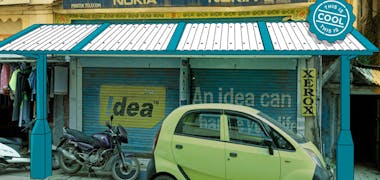
National Cooling Action Plans
Cooling is currently responsible for more than 7 percent of greenhouse gas (GHG) emissions, and this figure is projected to double by 2050 if left unmanaged. Given the adverse impact of cooling on GHG emissions and climate change, accelerated global efforts on policy, technology and finance availability for sustainable cooling have now become inevitable. Climate-friendly cooling could cut 8 years’ worth of global emissions by 2050.
National Cooling Action Plans (NCAPs), a global policy best practice, have gained prominence among countries beginning to develop long-term policy strategies. Starting in 2018 several countries opted to develop an NCAP with technical support from specialized agencies and address the cross-cutting nature of cooling, to bring stakeholders from government, industry and academia to the table, discuss needs and possible solutions, and translate this into a document that would provide a roadmap for action.

Protecting medicines and vaccines through data analytics across the cold chain
A decade ago, Nexleaf deployed the first ColdTrace sensor devices on vaccine fridges in rural clinics, bringing the same type of technology and data visibility that was already protecting high-value national vaccine stores to small health facilities in remote locations.
This technology — remote temperature monitoring, or RTM — was initially viewed by many in the sector as too high-tech, too specialized and too costly for rural settings. However, thanks to data provided by Ministries of Health personnel, ColdTrace has expanded beyond the pilot phase and achieved large-scale distribution since 2018 to ensure effective cooling across the entire vaccine cold chain.
ColdTrace currently protects vaccines for one in ten babies born around the world every year.

The Million Cool Roofs Challenge
Cool, reflective roofs are widely applicable – they absorb less of the sun’s radiation, which can reduce indoor air temperatures by 2–3°C and outdoor air temperatures by up to 10°C. In addition to increasing thermal comfort for people who do not have the means to access mechanical cooling options, cool roofs can help reduce the need for mechanical cooling, in turn reducing energy demand and cutting greenhouse gas (GHG) emissions. There is however a lack of awareness about cool roofs and markets in which to obtain them.
The Global Cool Cities Alliance (GCCA) successful Million Cool Roofs Challenge sought to find unique ways, informed by local conditions and ideas, to grow awareness and market availability at the local level.

Solutions for extreme heat resilience
Governments and organizations seeking to protect people from extreme heat face three major challenges. First, there is a wide and potentially lethal gap between public awareness of extreme heat risk and the real danger posed by it. Second, extreme heat is a multi-disciplinary threat that requires broad expertise in our response to it. Third, the responsibility for extreme heat response efforts is often spread across many agencies with little or no central coordination.
To make heat warnings easier to understand and drive more public action in advance of a heat wave, Arsht-Rock has partnered with organizations and local governments to pilot the first-ever heat warning system based on human health outcomes. The first-ever heat wave warning system based on human health outcomes will be piloted in Athens, Greece and Seville, Spain in the summer of 2022.

Advancing health facility electrification
The COVID-19 pandemic has emphasized the importance of reliable power for health service delivery and has led to increased momentum in global interest to address the challenges that surround health facility electrification. While decentralized renewable energy solutions present an opportunity to deploy efficient solutions in a rapid and cost-effective way, barriers such as the availability of reliable data, long-term sustainability and innovative financing mechanisms, and effective coordination remain.
In response to the COVID-19 pandemic and the resulting investment need for the health sector, SEforALL continues to leverage its longstanding Powering Healthcare programme to work with governments and their development partners to build the evidence and solutions needed to achieve universal electrification of health facilities by 2030.
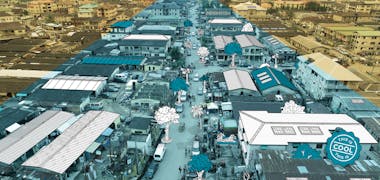
Cool roof programs
Due to their growing populations and unique 'heat island' challenges, cities will be a central focus for policymakers and governments adapting to sustainable cooling needs.
Roofs and pavements typically cover about 60% of city surfaces, the use of reflective materials on these surfaces can substantially reduce urban heat island effects, bringing urban temperatures down by up to 4°C.
Cool-roof programs like °CoolRoof in New York City are gaining popularity all over the world as climate change is sending temperatures higher.
Coatings are a relatively inexpensive way to support the 1.1 billion people worldwide without access to basic cooling services.
Read our blog to learn more about cool roofs as simple, affordable solution for curbing urban heat

Heat action plans
Longer, more intense heat waves are becoming increasingly frequent due to climate change. In Ahmedabad, India, temperatures can reach a staggering 45°C putting citizens at risk of heat related health issues.
When in May 2010 over 1,300 people died in a heatwave, the municipal council decided to act. The city's innovative Heat Action Plan activates several strategies to keep citizens cool:
• Increased public awareness
• Early warning alerts
• Access to water stations
• Cool roofs
It has saved lives, and is already being used to guide heat action planning in many cities across the globe.
Watch this video on the Ahmedabad Heat Action Plan to learn more about adapting your city to urban heat waves.
GET COOLING NEWS - SIGN UP TO THE NEWSLETTER